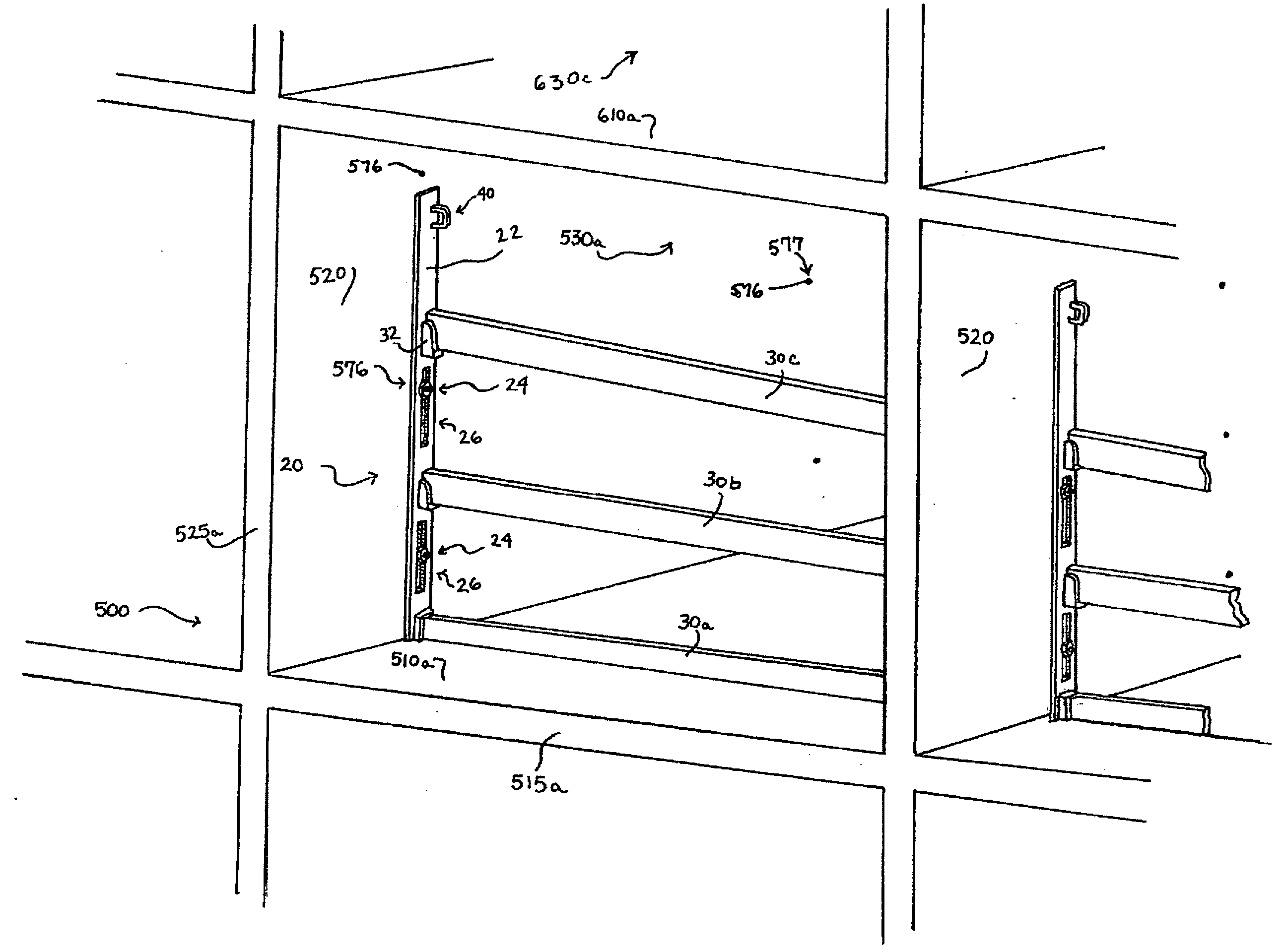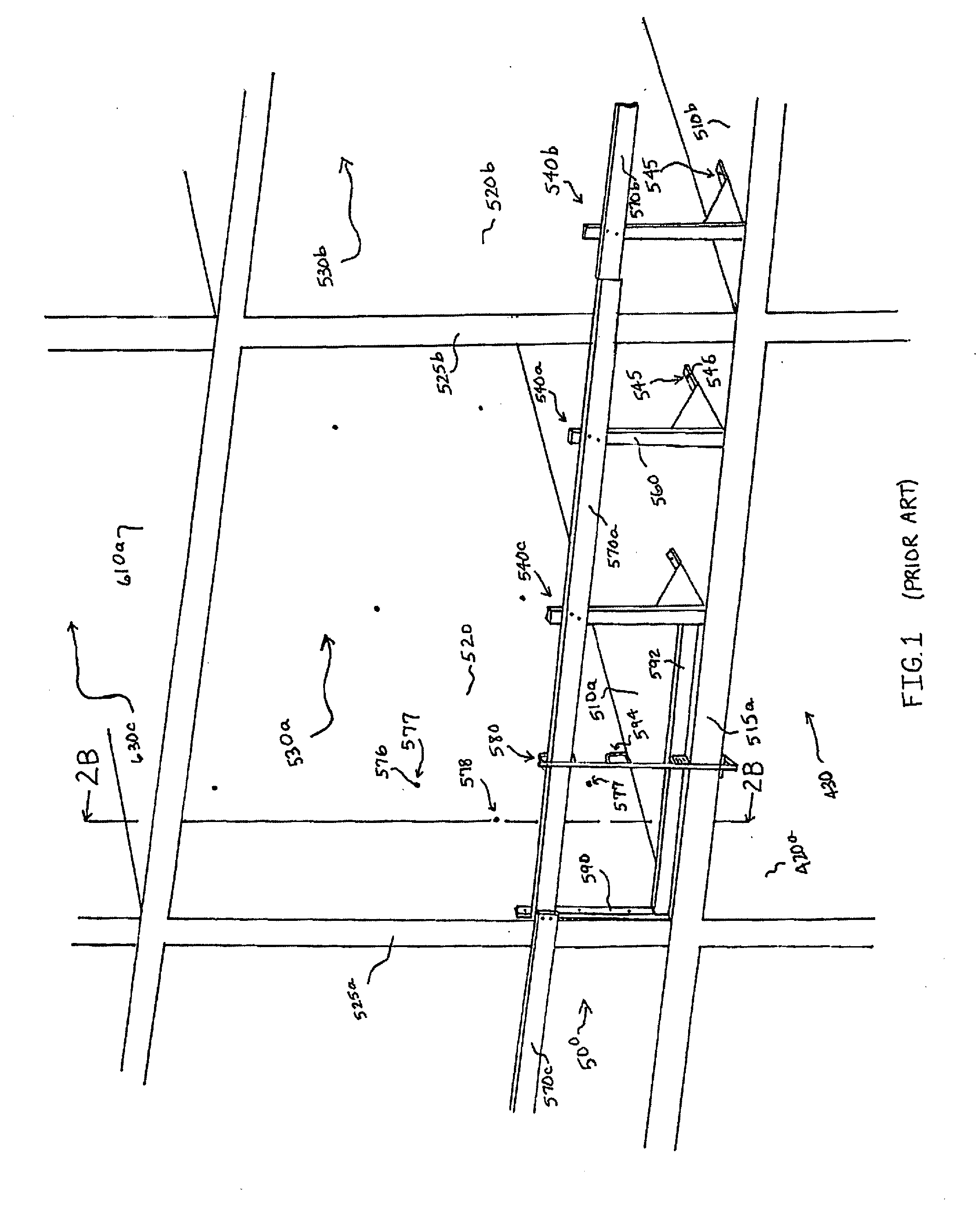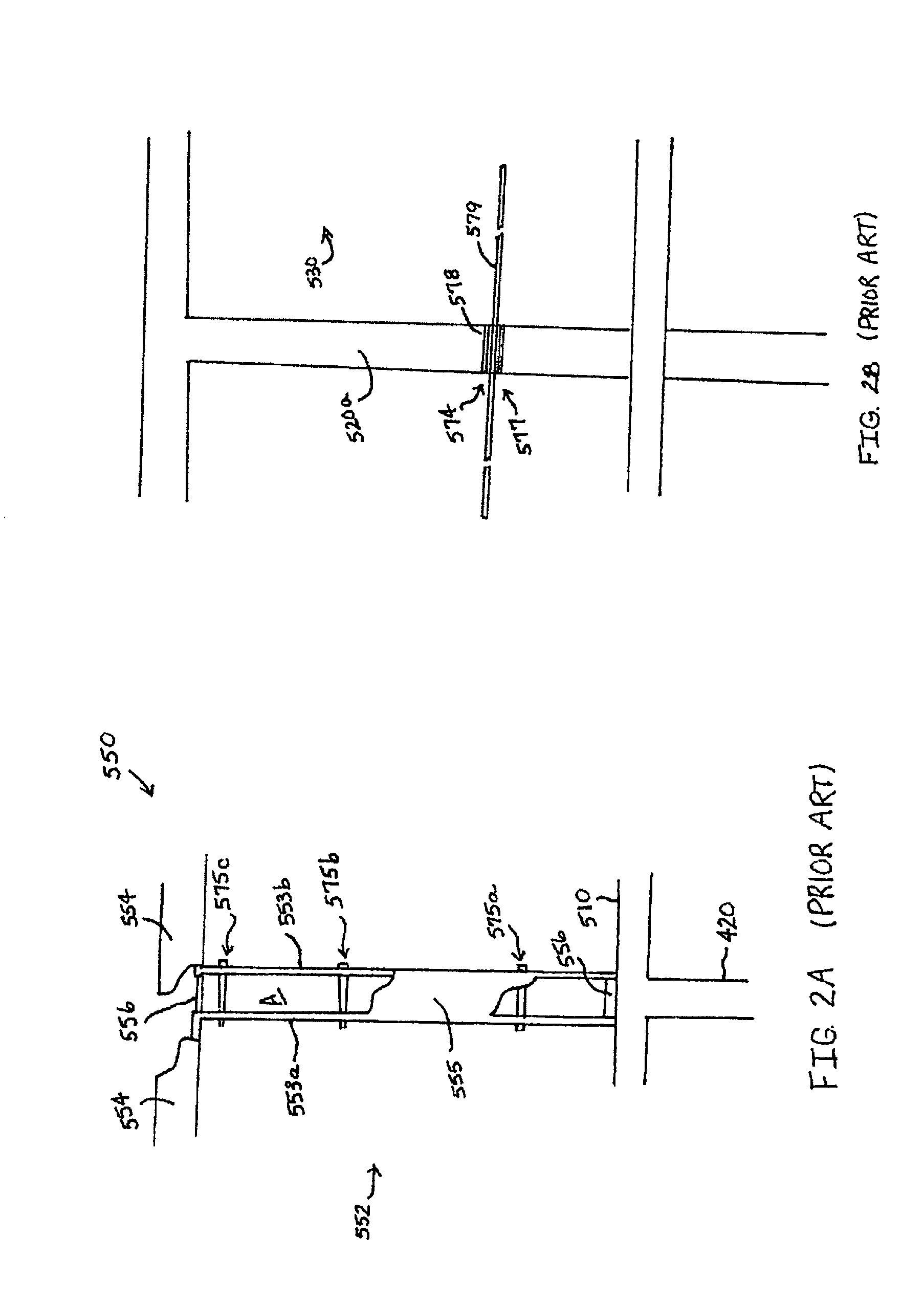Connecting devices to the floor of a structure, such as by nailing a standard or stanchion to a concrete floor results in damage to the floor, often requiring expensive or time-consuming repair, among other problems.
While such mechanisms generally avoid direct damage to the floor or structure, and also avoid placement or coverage over the edge of the slab, the reliability of such compression-fit mechanisms is questioned.
Natural or unnatural changes, such as expansion or contraction of the structure materials, present concern due to slippage of the devices from a secured safety position within the bay of the structure.
Such differences in the material characteristics of the device and structure present further variability issues for the stability of a compression-fit system.
The changed forces may cause the device to break, or to slip or weaken its fit against the structure, or if the device does not yield, in an extreme case the structure may shift or crack.
In either case, the expansion of the device might lift the ceiling slightly, thereby causing other posts or shoring devices to loose their compression fit.
In some cases the posts fall from position and are otherwise unworkable as a safety device.
In sum, the compression-fit devices having a post span from floor to ceiling are inherently suspect and unworkable for use in a safety role.
By the same token, compression-fit posts that span from wall-to-wall are also unworkable.
In practice it was found that the wedging of such vertical pieces of lumber can never be made completely secure and the lumber will rapidly dry out, being exposed to very severe
weathering, and will become loose and sometimes blow away altogether causing an additional
hazard to persons standing below.
The same thing can occur merely because the concrete itself dries out and will shrink very slightly thereby causing such vertical pieces of lumber to become loose and fall (or in other cases, cause the lumber to tighten or result in bowing or nail pulls).
The appearance of the otherwise safe structure may cause a false sense of security, further exacerbating the
hazard.
However, such systems lack the simplicity and reliability of the present invention.
They also are subject to variables encountered with material expansion as noted above, and thus are suspect and unreliable for a safety role.
Other drawbacks of such friction-fit mechanisms include the cost of having columns span from floor-to-ceiling or having expensive threaded components or other means for telescoping action.
The size of the floor-to ceiling mechanisms are bulky and often troublesome to transport and / or store.
Further, the over-tightening of a post or column may result in damage to the floor or ceiling and corresponding loosening of adjacent posts or columns.
Such mechanisms are generally troublesome to set-up.
Disadvantageously, while the above and other past approaches may be sufficient in some respects for their particular purposes, each has deficiencies.
Some of the approaches require a considerable effort in set-up and take-down; or still result in damage to the structure (such as by nailing, which commonly requires drilling or use of a hammerdrill or other aggressive tools) which in turn requires additional expense,
delay and labor for correction; or connect adjacent to, or cover up, the edge of the structure thus requiring subsequent movement in order to work on or at the edge location; or rely on a compression or friction fit which is susceptible to slippage and other troubles as mentioned.
Further, with such approaches there is an ever-present uncertainty as to whether the systems are indeed compliant with OSHA or other requirements, or if initially compliant, whether they can maintain compliance and be safe throughout the construction effort.
Even if some of the prior systems comprise a “standard railing” and / or guardrail system that securely connects to the structure without nailing or other damage to the structure, they are either of a compression-fit variety, or disadvantageously cover the edge location of the flooring.
The known guardrail devices are often complicated, expensive, typically result in damage to the structure to which they are affixed, are difficult to secure, and are susceptible to non-compliance with OSHA.
Many are not reusable, many are limited to a particular site configuration, require temporary removal and re-setting when a forklift needs access, are in the way when working on an outside edge of the structure (such as when laying
brick or pouring outside edge wall or constructing outside edge wall), require the subsequent patching of holes or damage to the structure or require
rework of concrete that was damaged by a
nail gun or
drill or other anchor mechanism.
Damages made to the walls of a structure have become increasingly problematic in recent years especially since owners of the structures sometimes prefer to keep the raw walls exposed to view for aesthetic purposes.
Drilling into the floor or walls or ceilings creates unsightly marks, and the repairs are often unsatisfactory.
Thus, drilling into the walls becomes risky.
Indeed, safety mechanisms are required to be used on a project, so the workers and owners often have to deal with the competing goals of safety vs. appearance and costs.
Traditional guardrail mechanisms have not been secure enough to accommodate such use.
Thus, traditional floor-to-ceiling or shoring mechanisms might not be acceptable for use as a life-line anchorage.
The mere presence of unstable yet seemingly safe shoring mechanisms may result in an unfortunate instance of a worker unwittingly or improperly using such systems for life-line purposes.
Removal of the ties results in a through-hole in the wall.
 Login to View More
Login to View More  Login to View More
Login to View More 


